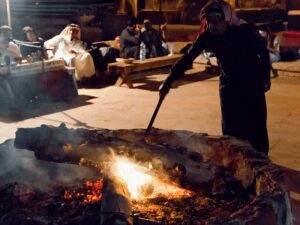[location-weather id=”10608″]
Jordan Climate Guide: Weather Patterns And Best Times To Visit
Welcome to the Jordan Climate Guide! In this comprehensive article, we will explore the weather patterns and best times to visit Jordan. Whether you’re planning a trip to explore the ancient wonders of Petra or experience the stunning landscapes of Wadi Rum, understanding Jordan’s climate is essential for a memorable and enjoyable journey.
Understanding Jordan’s Climate Zones
Jordan’s climate is predominantly arid to semi-arid, with significant variations across different geographical regions. The country’s diverse topography, including the Jordan Valley, highlands, and vast desert expanses, contributes to the phenomenally diverse climatic conditions. Let’s take a closer look at the different climate zones in Jordan:
The Arid Desert Heartland
Jordan’s desert heartland is characterized by extreme aridity and stark landscapes. Precipitation is scarce in this region, and the sun reigns supreme. Day-to-night temperature fluctuations are significant, resulting in what locals refer to as a “thermal rollercoaster.” Despite the aridity, the desert blooms after rare rainfalls, offering a vibrant spectacle. Navigating these deserts requires resilience and respect for the elements, as the unrelenting sun and sparse vegetation present challenges for unwary travelers.
Mediterranean Influences in the Northwest
The northwest of Jordan experiences a climate heavily influenced by Mediterranean patterns. Mild winters with moderate rainfall and hot, dry summers are characteristic of this region. The Mediterranean’s moderating effect makes the northwest one of the more fertile areas in Jordan. The contrast between the northwest and the harsher desert climates of Jordan’s interior is evident in the climatic differences.
Elevation Impact on Temperature
Jordan’s topography plays a significant role in its local climate conditions. Higher altitudes tend to result in cooler temperatures due to the thinning atmosphere. Mountainous regions in Jordan can experience significantly lower temperatures than the surrounding low-lying desert areas. Elevation also creates microclimates, inducing weather patterns that differ noticeably within short distances. Mountain ridges in Jordan can even act as climatic divides, influencing the distribution of rainfall and temperature gradients.
Seasonal Weather Patterns
Jordan’s climate is characterized by stark contrasts between seasons. Let’s explore the weather patterns throughout the year:
Hot Summers and Warm Winters
Summers in Jordan are scorching, with temperatures reaching their zenith levels. The arid plains and elevated terrains contribute to the overall warmth that permeates throughout the country. Winter, on the other hand, is relatively mild, with warmth persisting under the softer gaze of the sun. The lowland areas maintain comfortable temperatures, sparing inhabitants and visitors from the bitter cold experienced in many other regions. The transition from summer to winter is gradual, marked by decreasing intensity of the sun’s rays, shifting wind patterns, and a decrease in temperatures. The milder winter months offer an opportunity to explore Jordan’s historical landmarks without contending with the harsh summer sun.
Rainfall Variability and Droughts
Precipitation patterns in Jordan are sporadic and highly localized, leading to significant discrepancies in water resources across regions. The country’s primary water sources are highly dependent on seasonal rainfall, which is variable in nature. Consequently, Jordan is prone to periods of drought that can last for several years. These dry spells severely strain water resources, leading to acute shortages that necessitate both governmental and community responses to manage the scarcity. Sustainable water management and innovative agricultural practices are vital for maintaining the delicate balance of Jordan’s ecosystems and supporting its population and economy in the long term.
Climate Change Indicators
Jordan climate has been experiencing progressive oscillation towards aridity, reflecting broader trends associated with climate change. Rising average temperatures, altered precipitation patterns, and an increase in extreme weather events are key indicators of this shift. These changes have tangible impacts on Jordan’s water resources and agricultural productivity. To fortify Jordan’s resilience against these climatic adversities, robust adaptation strategies are needed.








